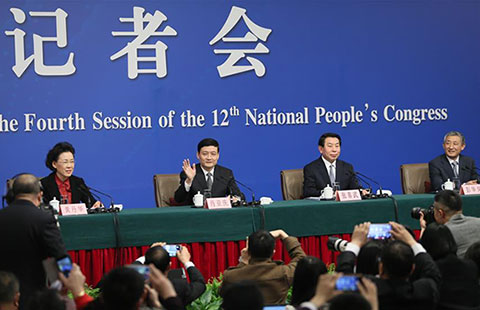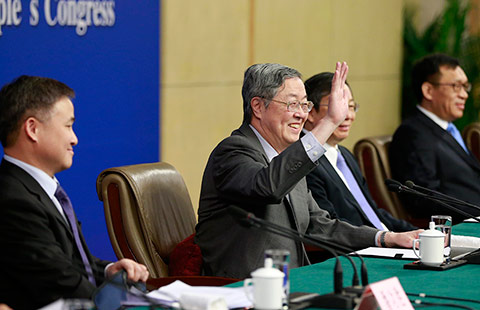China to expand electricity pricing reform
(Xinhua) Updated: 2016-03-14 16:42BEIJING - China will expand its pilot power transmission and distribution pricing reform to 12 more provincial power grids and one regional network in a bid to further open the electricity market, the country's top economic planner said on Monday.
Power grids in regions such as Beijing, Tianjin, Chongqing and Guangdong will be included in the pilot program, according to the National Development and Reform Commission.
The reform, first rolled out in Shenzhen in 2014, is mainly aimed at separating the power transmission and distribution price from the sales price, in effect allowing room for the market to have a bigger say in deciding the final price.
Unlike power-generating companies and sales firms, which face abundant competition in the market and thus have little pricing power, power grid companies are considered natural monopolies that can determine prices.
Under the reform, power grid companies will no longer profit from the difference between its costs and its sales prices. Instead, they will charge a government-verified service fee based on the costs of transmitting and distributing power.
By establishing an independent power transmission and distribution pricing mechanism, the government has laid a solid foundation for the market to decide prices on both the power generation and sales sides.
After its debut in Shenzhen, the reform was launched in Inner Mongolia, Anhui, Hubei, Ningxia, Yunnan and Guizhou in 2015.
- Chinese shares close higher - March 14
- Vanke agrees to buy Shenzhen Metro stake amid control tussle
- This 'mermaid' left broadcasting for a watery world
- 'Industry + Logistics' to help bring overseas shoppers back
- Minister of transport attends press conference of 12th NPC
- SST joins hands with channel partners to accelerate transition of the telecom industry
- Caterpillar sees opportunities in China's Five-Year Plan
- China's 'two sessions' focus on stabilizing growth, supply-side reforms: experts
















